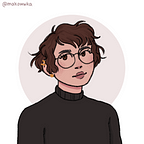The Subtle Feminist Agenda of Mister Rogers’ Neighborhood
When thinking of Mister Rogers’ Neighborhood, many would visualize puppets, red cardigans, and navy sneakers, but very few think about the impact that the show had on their development in childhood. Rogers’ show not only provided entertainment to millions of children on public access television, but also offered an understanding space in between the realm of reality and the Neighborhood of Make-Believe. It was in this space in which Rogers’ educated children daily on the world around them while also pushing progressive social messages in a way that was palatable for children. Rogers’ used his show and characters like Lady Elaine Fairchild, a spunky puppet who constantly questioned King Friday, to educate its viewers on social issues like feminism and gender roles, which were prevalent during the show’s run from 1968 to 2001. Rogers’ managed to push progressive messages without coming off as extremist, encouraging children to question the world around them for the better.
Lady Elaine Fairchild, while sometimes visually frightening, could be regarded as one of the earliest feminist icons in children’s media. Lady Elaine consistently broke away from what was expected of her as a woman and did so without the need of a man’s help. Episode 0016 begins with Rogers’ arriving with wood from the lumber yard, going into a song called I’d Like To Be Just Like My Dad with lyrics like “I’d like to be just like my dad…he knows how to drive the car and buy the gasoline” equating working with wood to masculinity and fatherhood. These themes are paralleled with femininity and motherhood using similar lyrics, but with themes of cooking and domestic chores. Both of these songs reinforce the strongly gendered activities and hobbies until Lady Elaine proclaims, “I’m tired of being a lady!” which is quickly followed by Make-Believe’s resident handyman, Handyman Negri, to highlight the non-domestic jobs that women can have including manufacturing plant managers, mayors, and doctors. This episode is one of many in which Lady Elaine is annoyed and frustrated with what is expected of her, constantly pushing her to participate in careers and activities that were not considered the norm for the time, including being the curator of the Museum Go-Round and exploring space. These non-traditional occupations were somewhat outlandish for women at the time, with Lady Elaine’s space adventure occurring over a decade before Sally Ride becoming the first woman in space. The ambitious goals Lady Elaine set for herself exemplified breaking away from the gendered norm of careers and hobbies for women and girls of the time, creating a space in which Rogers’ could encourage self-discovery and not force them back into overtly feminine, domestic-based boxes.
Mister Rogers’ consistently put one’s morals and ethics above all else, discouraging stereotyping or profiling based off gender alone in a time in which a woman’s worth was tied to how good of a mother or housewife she would be. Although just a puppet, Lady Elaine Fairchild demonstrated that women and girls did not always have to abide by the “ladylike” restrictions that were placed on them, and could explore hobbies, interests, or careers outside “housewife” and “mother,” instead opting for careers like curator or astronaut. While Mister Rogers did not overtly lead a feminist revolution, his characters paved the way for young girls and children to explore what they were passionate about, regardless of their gender or expectations put upon them at a young age. While many would see her as just a puppet, Lady Elaine Fairchild could be considered one of the earliest feminist icons for children, whether they’re aware of it or not.
